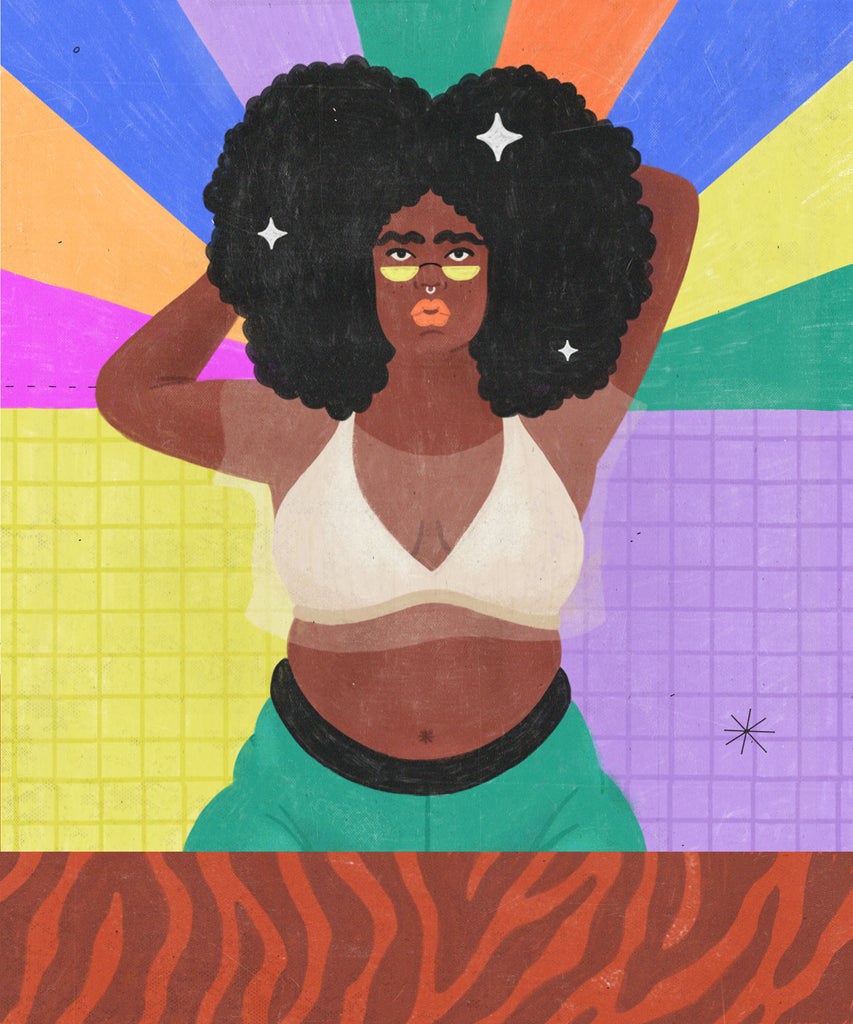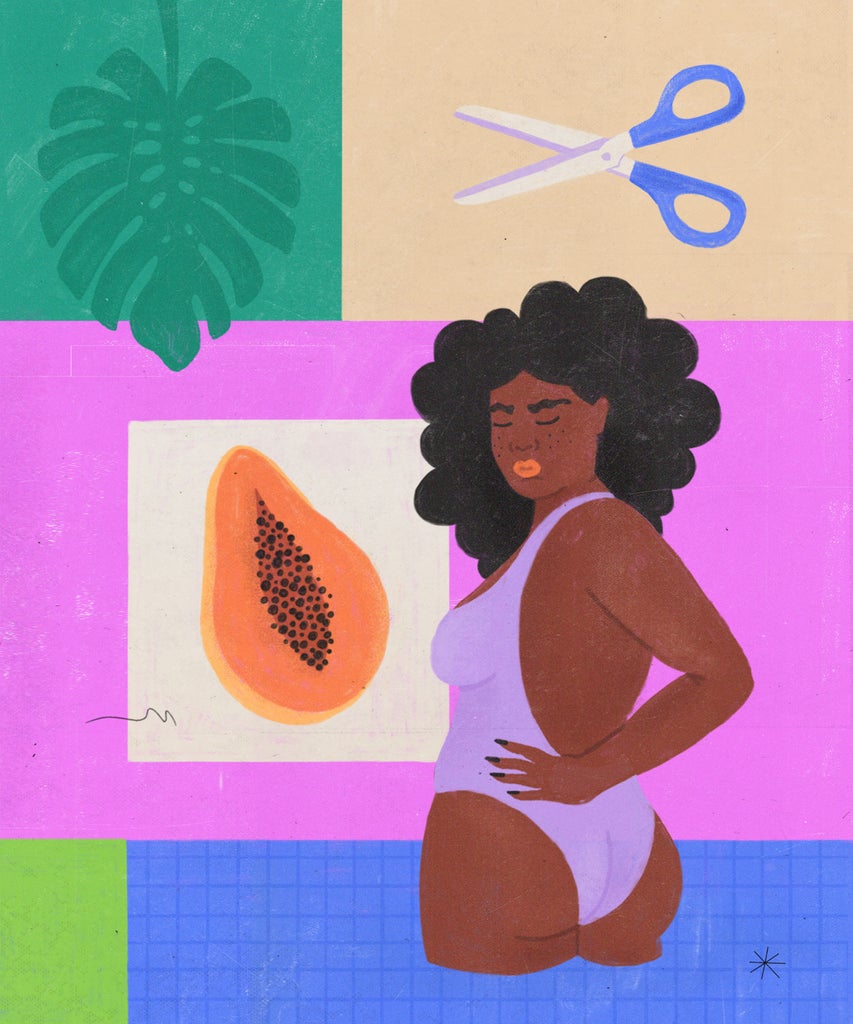When meeting potential romantic suitors, I find myself refraining from sharing that I’m Dominican. It’s not that I’m ashamed; with my friends, I’ll yell my Quisqueya pride from New York rooftops. But it’s not always safe for me to bring up my birthplace and cultural identity when dating because there are stereotypes of Dominican women, Black Dominican women specifically, that always turn the “getting to know you” conversation into something invasively sexual.
Young Black girls learn early on that our bodies are not ours. We are taught that our bodies are community property and they are up for public debate, ridicule, and perversion. Growing up, my body was regularly placed under an anti-Black cultural litmus test to score how “Latina” I was. As a developing child, I was confronted with dangerous Black girl myths that my body was less innocent and sexually advanced as well as harmful Latina stereotypes that I was hot-blooded and always available for sex. While my prepubescent body was hypersexualized, the fat Black Latinas around me were considered less desirable and more vulgar, simply for existing. Today, even after years of grueling internal work to take ownership of my body, I still know that I can’t get too comfortable, because society at large is always ready to pick apart Black women’s bodies any chance it can.
As white women, Latinx and non-Latinx, travel to the Dominican Republic to obtain bits of Black women’s bodies — our curves and our facial features — through cosmetic surgery, I’ve had to work very hard to retain myself and my body and keep it from being dissected by everyone. But this hasn’t been easy to escape. Whether it’s being approached by men who are in Washington Heights “looking to get to know some Dominican girls” or a date saying, “Oh, you’re one of those Dominican girls,” Black Latin American women are seen as sexual adventures and nothing more.
Black Latin American women are seen as sexual adventures and nothing more.
This dangerous ideology can be traced back to the island itself. Every year, thousands of people flock to the Dominican Republic to underpay and mistreat cis and trans women who are involved in sex work. The exploitation of Dominican sex workers, many of them Black, Haitian, lower-income, and possibly underage, is a common practice, and these ideas are exported worldwide — even to predominantly Dominican neighborhoods like Washington Heights and Inwood.
Even more, as a daughter of the Dominican Republic, I always carry with me the truth that my people, my land, and possibly my bloodline were one of the first to experience the violence of white supremacy in “the new world.” After Christopher Columbus and his gang of terrorists were rescued by Indigenous people off the coast of Quisequaya in 1492, they quickly and systematically abused and violated the land, enslaved Africans that were trafficked to the island, and raped the Black and Brown women on the land.

The racial and sexualized violence of white supremacy was also accompanied by forced religious conversions. This particular paradox became one of the foundational elements of the Dominican Republic, and it’s a legacy that is still clear today. It is the only country in the world to have a Bible on its national flag, yet it is also one of the most frequented destinations for sex tourism.
As a young Black Dominican girl growing up in Florida and New York, I experienced these paradoxes firsthand. While I was celebrated for my ability to do “El Baile del Perrito” and perfectly swing my hips when dancing, I was also scolded for sitting on chairs “the wrong way,” with my legs open, or wearing clothes that were too revealing for my maturing body. As a child, one of the earliest messages I received was that my Black body was to be celebrated but only when it was in service to others — either through labor, entertainment, or stolen secret moments of curiosity. And, of course, Jesus was always watching.
Unlearning these ideas about my body has taken time and resources, but it started in the most unlikely of places: my abuelita. “¿Y cuando fue la última vez que … tu sabes?” my grandma Juana asked me, while making a sex motion with her hands. I was 20 years old and we were cooking together in her kitchen. I remember throwing my head back in nervous laughter and responding, “¡Mami! No, no digas eso.” Her reply: “No mija, tienes que dar le la gracias a dios que tienes tremendo cuerpo y tienes que compartirlo con alguien.” “OK mami,” I flippantly answered, unaware of the power her words would have in my own reclamation.
As a Black queer Latina who is also a young mother, I’ve come to learn that I’m not “too much,” but that people and society are usually not enough.
Grandma Juana always reminded me that I was a beautiful badass bitch. Her compliments and words of affirmation started when I was around 14 years old. As I got older, the declarations became more direct and age appropriate. Barely five feet, Juana’s soul was giant. She was a tiny Catholic Dominican woman full of paradoxes, espousing both archaic religious ideas and radical feminism — well before I even knew that word myself. Every time my grandma saw me, she would speak words of affirmation over me and my body. She would tell me that I should use my body and beauty as a source of power.
It took me more than a decade, and Juana’s death in 2020, to realize how important her words were for me as a Black woman from Latin America. As a Black queer Latina who is also a young mother, I’ve come to learn that I’m not “too much,” but that people and society are usually not enough. For the small-minded, being Black and from Latin America is exotic or confusing, and because people do not like what they cannot comprehend, I’ve been told I’m lying about my ethnicity to try to make myself interesting. Similarly, being a queer women with a child, I’ve been called a fake, a liar, and someone only interested in using people to co-parent. All of these assumptions and tests, I’ve learned, have absolutely nothing to do with me.
I’m not a cultural learning center for those who fetishize, for the curious, the misogynist, the confused, the culturally incompetent, and those dedicated to never seeing the full humanity of Black women, and especially Black women from Latin America. These ideas are regressive, inaccurate, infuriating, and rooted in misogynoir, and they are also harmful and exhausting to always have to disprove. So I’ve stopped trying.

Instead, I now put my time and energy into experiences that affirm what I know about my body: It’s everything that I say it is — Black, Dominican, queer, glorious, and worthy of my own praise. As I’ve gotten older and tended to my own inner child, I remember the beautiful Black women I watched on stage and in music videos and wanted to be like. Today, one of my favorite hobbies is conceptualizing thirst trap photoshoots for myself at home. I think about the perfect thong to wear with my gold-linked dress or what makeup would go best with my cotton-candy pink mini skirt and bikini-top outfit, a look inspired by Mariah Carey’s ‘90s softness. Then I curate a playlist to listen to as I take my own photos. After the shoot, I carefully scroll through all the images, admiring every single one before deciding which photos I’ll post and how I’ll present my body to the world.
This is self-worship; this, according to my grandmother, is godly work.
To be clear, I post these photos purely for vanity, and I feel no shame about it. In fact, I share them and feel great, because these are moments when I am celebrating my creativity, my body, and my multi-hyphenate identity. This is self-worship; this, according to my grandmother, is godly work.
I am no longer fine with being a site for someone else’s sexual or cultural intrigue. I’m not worried about respectability or explaining myself. I claim my desirability for myself. While my thirst trap photoshoots aren’t video vixen status (yet!), they are part of my reclamation of my beauty, body, and identity exactly as I want — and exactly as my grandmother taught me. I recite the affirmations Grandma Juana spoke over me for years: “tienes que dar le la gracias a dios que tienes tremendo cuerpo y tienes que compartirlo con alguien.” With each photo that I share, I celebrate, own, cherish, and acknowledge the badass Black queer mama from Latin America that I am.
Like what you see? How about some more R29 goodness, right here?
from Refinery29 https://ift.tt/GxLN7eE
via IFTTT
